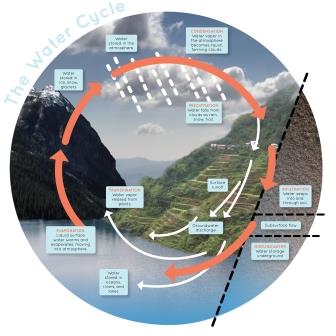Water Matters
 When looking at Earth from space, it appears that water is nearly everywhere. And it is. But only 3% of the Earth’s water is freshwater—water that we can use to drink and grow crops. Demands for enough clean water are increasing, but supplies aren’t. Water, like oil and gas, is a limited resource. But unlike them, there is no substitute for good old H20.
When looking at Earth from space, it appears that water is nearly everywhere. And it is. But only 3% of the Earth’s water is freshwater—water that we can use to drink and grow crops. Demands for enough clean water are increasing, but supplies aren’t. Water, like oil and gas, is a limited resource. But unlike them, there is no substitute for good old H20.
So what does that mean for agriculture? That’s a critical question, especially as global population increases. Not only will agriculture need more water, so will other consumers like homeowners and industry. Competition for sufficient clean water is becoming fierce.
Right now, agriculture is the world’s largest user of water. Also, agriculture impacts the quality of water that ends up in streams, rivers, and oceans. What will that mean for agriculture—and its ability to produce food? That’s the challenge for agronomists today and the next generation of agronomists. How can farmers make every drop of water count while producing more and protecting the quality of water all of us depend on?
 Water Cycle
Water Cycle
Agronomists need to understand the Earth’s water cycle so they can look for ways to use water wisely in agriculture. What is the Water Cycle? It’s the way water moves on, in and above the earth’s surface – in all of its forms (liquid, gas, solid). Let’s take a look at the Water Cycle …
Water is primarily stored in oceans, rivers, and lakes and evaporates into the atmosphere. Water also is stored in soil which evaporates and in plants and is removed through evapotranspiration (sort of like when we breathe and water vapor evaporates). It’s also stores in ice, snow and glaciers and evaporates as well. All of that water vapor in the atmosphere creates condensation becomes liquid and forming clouds. These cloud particles fall out of the sky as rain, snow, and even hail. That precipitation runs off the soil back into the oceans, rivers and lakes. Much of it infiltrates into and through the soil and back into the cycle as groundwater.
So how can we help conserve water when growing crops?
- Keep water in the soil through no-till and keeping the roots of the plants in the soil over the winter,
- Keep year-round vegetation to soak up water and un-used nutrients – preserving the quality of water for people living downstream,
- Grow water-saving crops,
- Put water only where it is needed using drip-irrigation,
- Fertilize only when needed,
- Irrigate only when needed.
View and download the related educator activity:
Chapter 5: Water! How Can You Help?
Additional Resources
Additional resources and lesson plans are available at JetStream, the National Weather Service Online Weather School.

